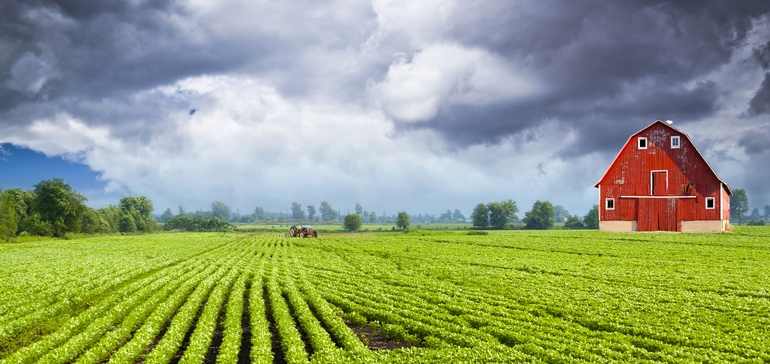FSMA’s produce rule helps sprout tougher food safety measures on the farm
Many crop producers aren’t used to regulations, so the new guidelines that start going into effect next year signify big changes in rural America.
When the Food Safety Modernization Act was signed into law in 2011, much of the focus was on the tougher standards that manufacturing and processing facilities would have to put in place to help prevent outbreaks that sicken an estimated 48 million people annually.
But it also brought mandated food safety practices somewhere relatively new: America’s 2.1 million farms. FSMA’s produce safety rule sets standards for production, harvest and handling of fruits and vegetables in order to decrease the risk of contamination. The requirements for biological soil additions, access to fields by animals and worker health and hygiene training and access rules will be enforced for most produce farms starting in January 2018. The water-related compliance dates are likely to be commence four years later.
“It’s clear that in some aspects, good agricultural practices don’t quite meet enough of a control standard,” Will Daniels, principal at the Fresh Integrity Group, told Food Dive at a conference earlier this year. “… [There are a] whole bunch of other folks who don’t necessarily have [or] haven’t met on-farm inspections, haven’t met a new standard that they might disagree with because they’ve been doing [it] for hundreds of years. Maybe [it’s a] fourth-generation farmer kind of a thing, and, ‘We’ve always done it this way and never had a problem. Why do we have to worry about that?’ “
There are many reasons for farmers to be concerned with produce safety. According to statistics from the U.S. Centers for Disease Control and Prevention, between 1998 and 2008, produce accounted for 46% of foodborne illnesses — with 22% coming from leafy vegetables. Bacteria can lurk on the surface of fruits and vegetables, as well as inside of fruits and leaves, being rather difficult to wash off. And because much fresh produce is eaten raw, consumers can be at increased risk.
While growers are likely aware of the risks, many farmers across the country haven’t put standards in place to control safety of their crops. And with FSMA’s produce safety rule now being finalized — and taking effect in a few months — it’s time for everyone to make changes in their practices. Daniels, who has a long career in working with produce growers and currently is a consultant to help them come into compliance in terms of food safety, said different industry players are approaching — and working to comply with — the regulations in their own ways.
“It’s a mixed bag of emotion and response and concern, or welcoming the regulation as creating kind of an even playing field for everybody,” Daniels said.
How spinach led to industry change
In 2006, a wide-ranging E. coli outbreak was traced to bagged fresh spinach sold by Dole. The outbreak led to 205 illnesses in 26 states — which included 104 hospitalizations, 31 cases of hemolytic uremic syndrome, and four deaths. After the contamination was traced to four spinach fields in California, state and federal officials started to look into why the outbreak occurred.



